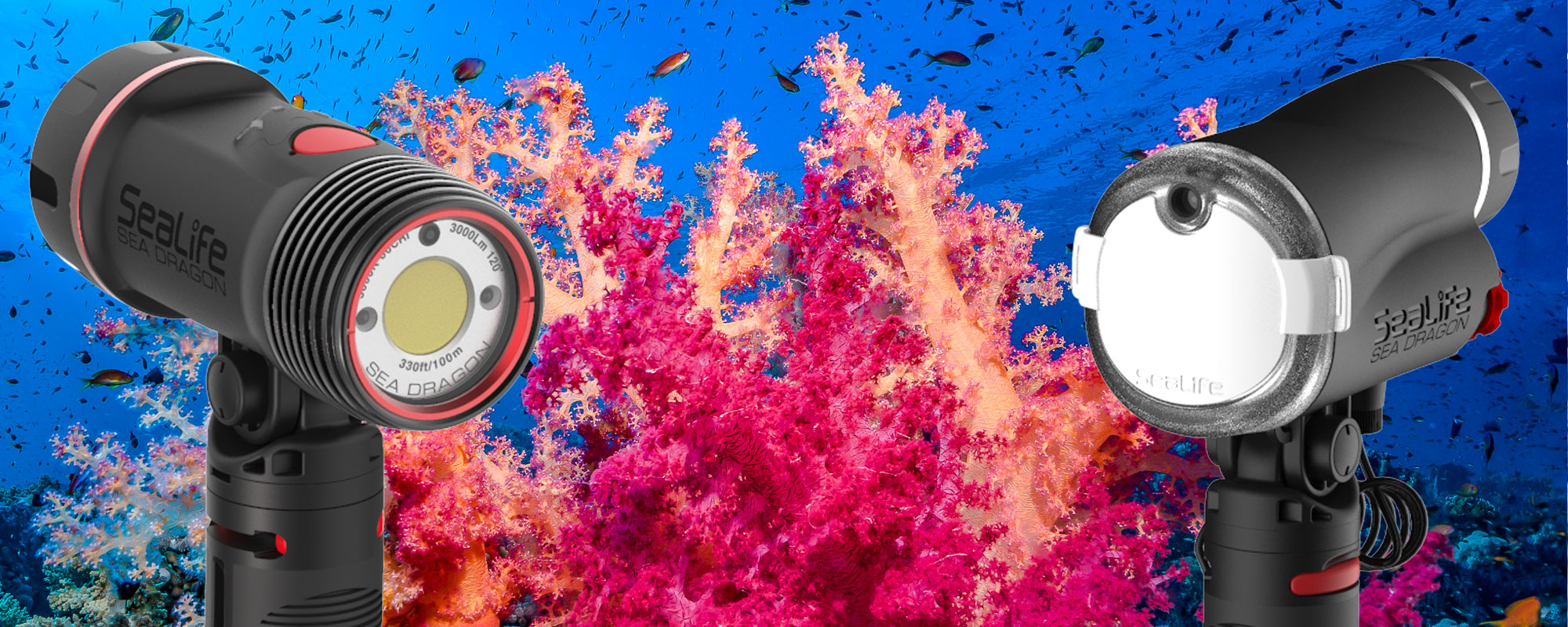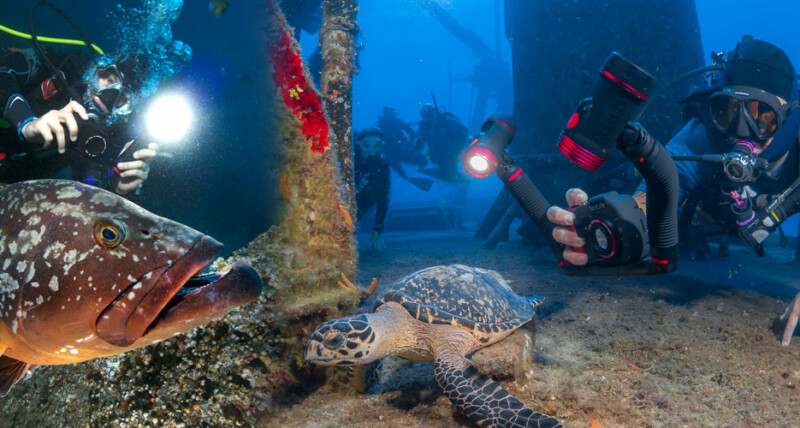
By The SeaLife Staff
Underwater LED lights for photos and videos have become very popular recently. Mainly because battery and LED technology has evolved rapidly in the past few years; batteries have become more powerful and LED’s have become brighter and more efficient. Some divers have asked if underwater strobes are destined for extinction in favor of photo-videos lights. Hardly, and for several reasons. Here are some of the important trade-offs to consider when deciding to purchase a strobe versus photo-video light.
What are the key benefits of an underwater Strobe?
Number one, is the power-to-size ratio of a strobe is about 5 times brighter than a LED photo-video light. A strobe gives you a lot more brightness and effective range for its relative small body size. Sure, it’s possible to design a LED light that is as bright as a 20 guide number strobe, but it would be extremely large [and expensive].
Secondly, a strobe makes the underwater photographer less noticeable to surrounding sealife. Some sea creatures are sensitive to light and tend to shy away from bright constant light sources. It’s easier to photograph light-sensitive sea creatures using a strobe than with a constant light.
Another key advantage of a strobe versus LED light is battery life. A strobe only produces a short burst of light when needed, which preserves battery power compared to a light that is on all the time. You can expect around 250 flashes at full power using 4 AA batteries. Rarely would a diver shoot at full power all the time, so you can expect a strobe to last you all day. A LED light’s battery at full power will typically last approximately 1 hour, requiring a freshly charged battery between dives.
Lastly, the xenon or neon lamps used in most strobes produce a nice warm light, typically around 5500K color temperature and high 90’s CRI (Color rendering Index) – ideal for underwater photography. A quality photo-video light may also produce optimal color temperatures in the 5000 to 6000 range and 95 CRI, but there is a lot more variance among different brands/models, so it’s important know what you are buying.

What are the key benefits of an underwater photo-video light?
The most obvious benefit of an underwater photo-video light is the versatility. A light can be used for recording video, capture still images, assist the camera’s auto-focus accuracy [particularly in lower light conditions] and help divers uncover sea creatures in darker, shaded areas of the reef.
One overlooked benefit of a photo-video light is the ease-of-use. The camera “sees” the light and automatically adjusts exposure according to the ambient lighting conditions. In other words, what you see on the display before pushing the shutter button is what the captured image will look like. The camera does not see the effect of the strobe, so it’s not uncommon to shoot several pictures of the same subject and fine-tune the strobe’s brightness until you’re happy with the image exposure.
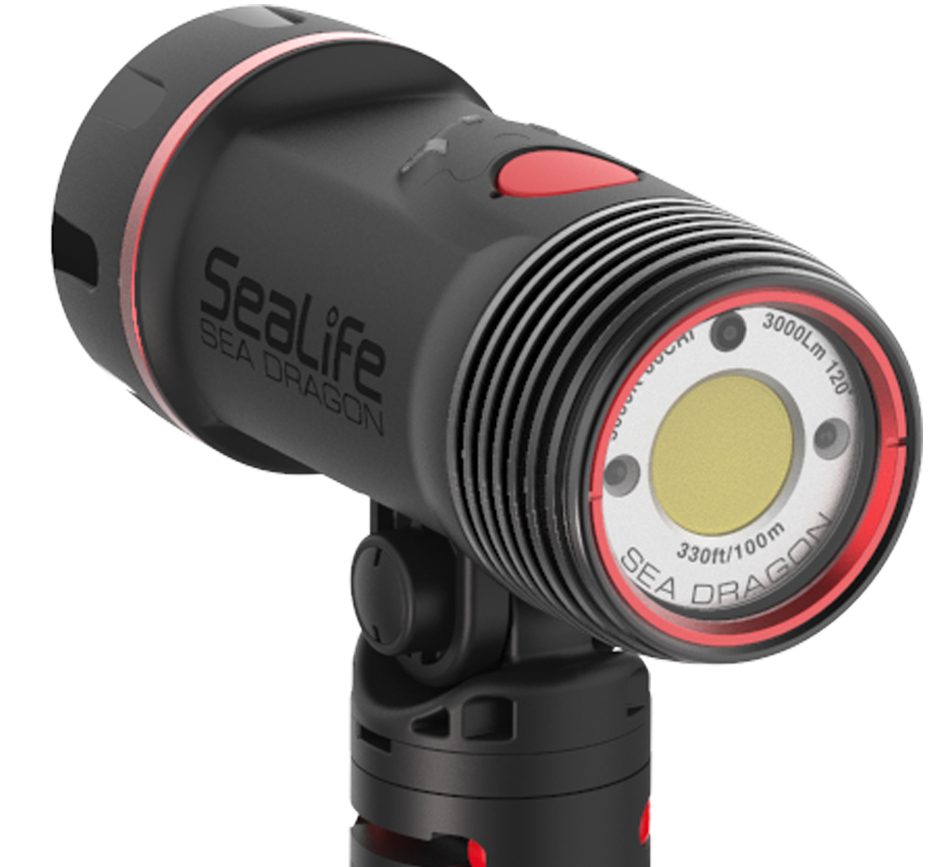
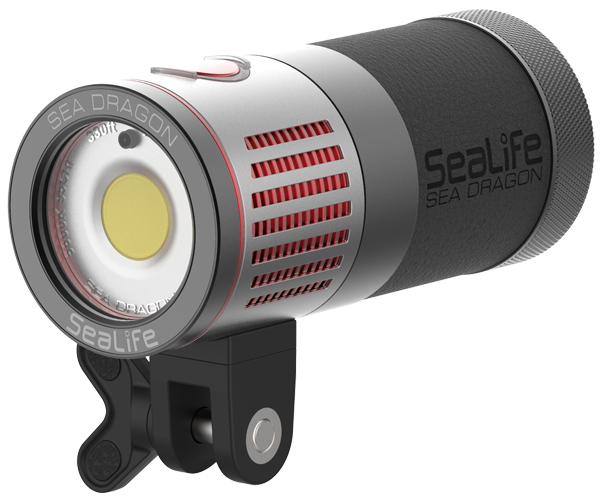
Photo-video lights do not require the use of an optical cable. A strobe requires an optical cable connection between the camera and strobe in order to trigger the strobe, so it fires in sync with the camera’s shutter.
A significant advancement in LED lighting is the development of COB LED’s. COB stands for “Chip On Board” and are easily identifiable by the large coin-sized LED. A COB contains many more light sources in the same area compared to a standard LED, resulting in a greatly increased lumen output per square inch. COB yield a very wide beam angle, typically around 120°, making this type of light perfect for wide angle cameras and lenses. Also consider that one COB will only cast one shadow, similar to sunlight, compared to multiple standard LED’s that cast multiple shadows. Not all COB’s are the same, so make sure to check the lumen output, color temperature and CRI before buying the light.
Can I use a strobe AND photo-video light together?
Absolutely! Combining a strobe and light gives you all of the above benefits. There are a couple of popular setup configurations to consider: Light and strobe on either side of the camera or two strobes – one on each side of the camera – and light attached to the camera’s cold shoe.
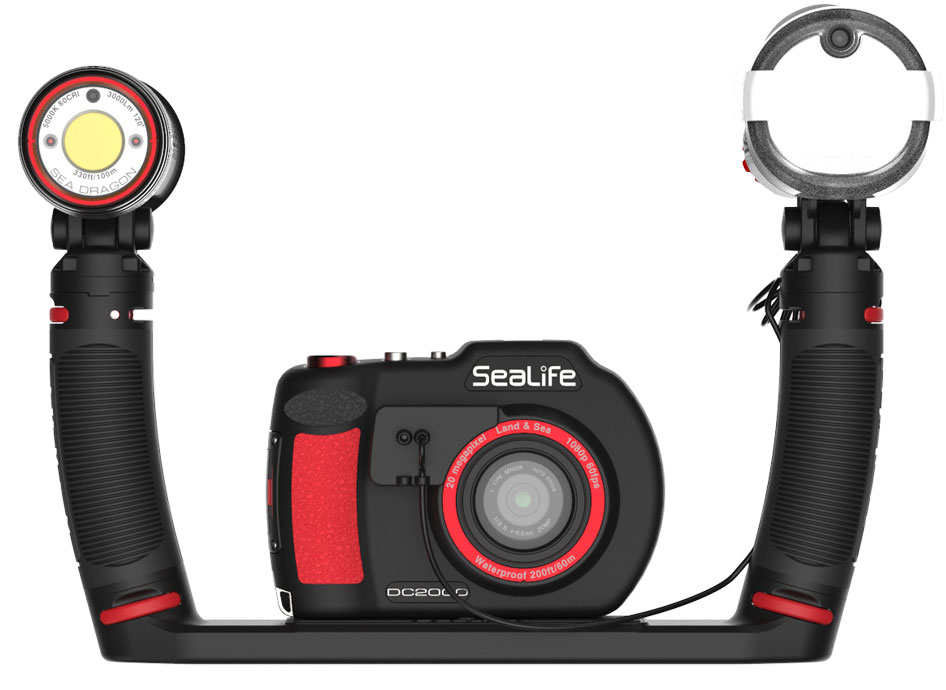
So, which type of underwater lighting setup is best for me?
This depends on your skill level and what you’re most likely going to be shooting with the camera. Shooting with a strobe does take some more skill and patience to fine-tune the image exposure. Shooting with a photo-video light is much easier but the effective shooting range can be limited,
If you are shooting mostly still photos, you owe it to yourself to get a strobe. If you are shooting mostly video, the photo-video light is the better choice. If you are shooting both stills and video, combining a strobe with photo-video light is a great setup.
Here is a summary of advantages and trade-offs to help you make the best choice:
Strobe (external flash)
+ Long effective range of 6 to 8 feet.
+ Less expensive compared to photo-video lights
+ Longer battery life – lasts all day of diving.
+ Diver is less noticeable to sea creatures when composing the image.
+ Can be used on land.
– Requires a little more skill and patience to fine-tune image exposure. Camera does not see the flash until capturing the image, so it’s normal to make some adjustments to flash brightness or camera’s exposure controls until image exposure okay.
– Not useable for video recordings, looking into dark areas or assist camera’s auto focus.
– Requires optical cable connection between camera and flash.
Photo-Video Light
+ Easier and faster to use. You see the color and exposure effect on the camera’s LCD display before taking the picture.
+ Light is useful to discover hidden sea creatures in shadows and dark areas of the reef.
+ As the name implies, the light can be used for photos and videos
+ Assists the camera’s auto focus lens to accurately focus on the subject, especially in low light, shadows, wrecks or night diving.
+ No optical cables necessary
– Effective range for 3000+ lumen light is generally 3 to 4 feet in daylight.
– More expensive compared to an external flash
– Some sea creature tend to shy away from bright constant light sources, especially at nighttime.
– Shorter battery life – generally about 1 hour at full power.
– Should only be used underwater as light head gets hot and needs water for cooling purposes.


